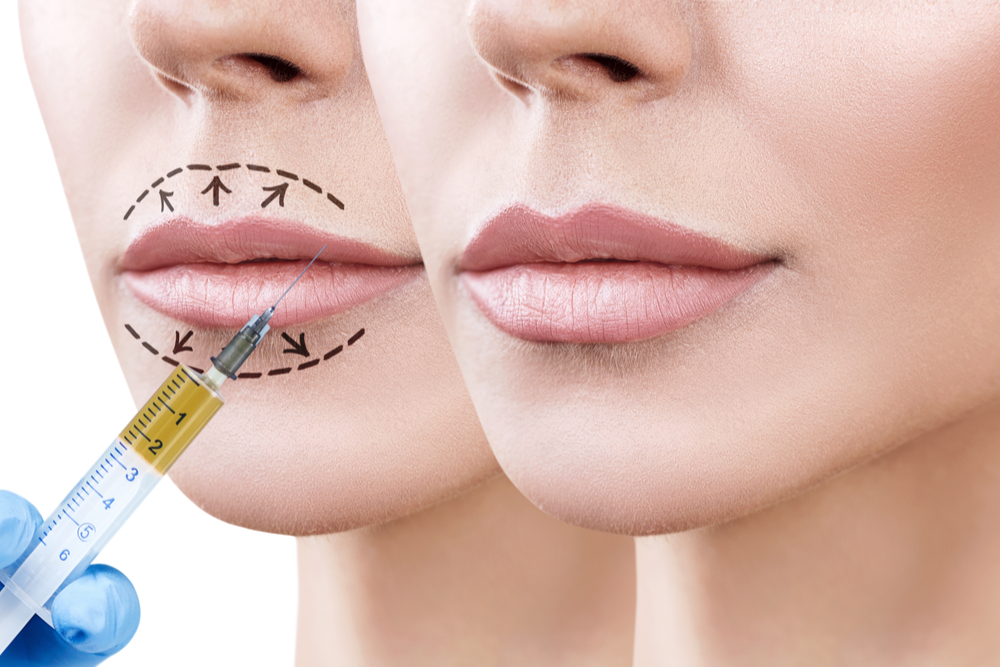- FDA-cleared UltraShape is a body-contouring procedure that uses pulsed ultrasound technology to destroy fat.
- For optimal results, patients must receive three treatments in two-week intervals.
- It has some advantages over plastic surgery, namely its lower cost and quick, pain-free recovery time.
Is painless, non-invasive fat reduction possible? According to the makers of UltraShape — a body-shaping procedure that uses pulsed ultrasound energy to zap away fat cells — it’s as real as it gets.
The treatment joins the pantheon of existing non-surgical, fat-reducing procedures, including CoolSculpting, Zerona, SculpSure, and others. How does UltraShape differ? How does it stack up against other treatments, including plastic surgery? We address these queries and more of your FAQs here.
What is UltraShape?
UltraShape is considered a “body-shaping” or “body-contouring” technique that employs ultrasound energy below the skin’s surface to rupture fat deposits.
There are two different kinds of UltraShape treatments: UltraShape and UltraShape Power. The latter simply employs an upgraded device that features a smaller, faster and more efficient design.
The original treatment was approved by the FDA in 2014. UltraShape Power was FDA-approved in 2016. The device used does not affect treatment frequency as both options require about three sessions total, set two weeks apart.
In general, UltraShape is recommended for people who have stubborn fat in specific problem areas. It is not intended as a weight loss solution and is not ideal for all candidates. You should only receive an UltraShape treatment if you have a body mass index (BMI) of 30 or less.
How does it work?
UltraShape employs ultrasound technology to penetrate the skin’s surface and distress fat cells to break them down. Using a focused ultrasound, the device administers changing pressure waves to create vapor cavities within the fat cells. This pressure damages the fat cell membranes, causing them to rupture. According to its maker, UltraShape will not affect the nerves, blood vessels or surrounding skin in or around the treatment area.
With fat reduction surgeries, such as liposuction or laser-assisted liposuction, the excess fat is sucked out using a cannula. With UltraShape, fat cells are released in the form of triglycerides — the main components of body fat — which the liver naturally processes and removes from your body.
UltraShape treatments usually last one hour and must be administered at least two weeks apart to give the body time to clear the fat from your system.
What areas can it target?
UltraShape is most often used on the abdominal area and flanks, but more and more practitioners are using it to target the thighs, arms, love handles and even the male chest. Most of the clinical studies that have been done on UltraShape, however, focus on its efficacy and safety when used to target the abdomen.
There’s typically no pain, soreness or swelling associated with this non-invasive procedure, which doesn’t even require a numbing agent. In a 2010 study published by the American Society for Aesthetic Plastic Surgery, researchers reported that no adverse events occurred in a group of twenty-five healthy Caucasian women who underwent UltraShape treatments.
Most patients report that the experience is generally pleasant. In fact, many even say that the treatments are somewhat relaxing.
Does UltraShape actually work?
Any non-invasive treatment should be held up to extreme scrutiny, especially in the fat reduction department. Independent research conducted on UltraShape is promising. The same study mentioned previously also found that the body-contouring procedure resulted in a mean midline circumference loss of 3.58 centimeters after the third treatment.
It’s important to note that UltraShape cannot help in scenarios where the muscles have separated from the abdomen or when the skin is still loose from pregnancy.
Are there any serious side effects?
There are almost no side effects associated with UltraShape. Some patients do report feeling a slight tingling sensation in the targeted area but there is usually no soreness or numbness post-treatment. What’s more, UltraShape claims to leave no visible signs of treatment after the fact.
What does the recovery entail?
Most people are able to resume their normal activities immediately after treatment. In fact, the makers of UltraShape claim that there’s zero recovery time, and report that thousands of treatments have been performed with no serious risks or side effects.
How long do results last?
The subcutaneous fat cells that are broken down during an UltraShape therapy session will never “grow” back. They’re permanently destroyed and flushed out of the body.
However, the makers themselves warn that this process of fat-cell destruction can cause neighboring fat cells to increase in size. For that reason, it’s extremely important to follow a healthy diet and exercise regularly to obtain the best possible results.
How much does UltraShape cost?
As with any cosmetic treatment, costs vary widely depending on where you live. The average price for a procedure such as UltraShape is $2,700 to $4,500 USD for three treatments.
One benefit of UltraShape over other kinds of fat-removal techniques is that most people require just three sessions. Your technician may recommend more in some cases, which will translate into a higher bill.
How does it compare to plastic surgery?
Non-surgical fat removal is growing in popularity. However, there’s no evidence to suggest that any of these procedures match the results that can be obtained with liposuction or a tummy tuck.
Surgical procedures are often favored as ongoing treatments are not required to achieve optimal results. By comparison, most non-surgical options require multiple treatments to attain ideal results.
- Overall weight loss
Tummy tucks can also address more issues, such as stretched-out skin, while liposuction can result in more weight loss overall. Lipo is also more suitable for people who want to remove larger deposits of fat, and it works best on the neck, face, and back.
Note that neither of these procedures helps you lose weight. Bariatric surgery is the only true weight loss procedure. However, it’s typically recommended for people with a higher BMI.
- Cost comparisons
Non-invasive procedures are extremely desirable because there’s no downtime, no pain, and a lower cost. Tummy tucks range in price from about $4,000 to $15,000 USD, while liposuction can set you back between $2,000 and $3,500 USD per treatment area — not including fees for the hospital, anesthesia and time taken off work for recovery.
All things considered, surgery can add up to double, triple or even quadruple the cost of body shaping treatments.
How does UltraShape measure up to the competition?
Body contouring treatments differ primarily in how they destroy fat cells. CoolSculpting freezes away the fat, SculpSure zaps it away with lasers, and UltraShape ruptures fat cells with sound waves. Although all of these treatments employ varying methods to get rid of fat, the costs and results are comparable.
CoolSculpting vs UltraShape
Both are used for treating stubborn areas, including the tummy, thighs and arms. However, CoolSculpting can leave the skin feeling numb or bruised, whereas UltraShape is entirely pain-free. CoolSculpting can get pricey, as each treatment is around $600 USD per application for an area about the size of a hand.
SculpSure vs UltraShape
UltraShape is also similar to SculpSure, which gets a slight advantage because it tends to show results sooner. SculpSure patients may see results in just a single half-hour procedure. Interestingly, immediate results don’t seem to cost more. The average price of both procedures is somewhere around $1,500 USD.
» There are several other non-invasive fat removal treatments — Connect with our medical review panel and get the suggestions before making a commitment.









